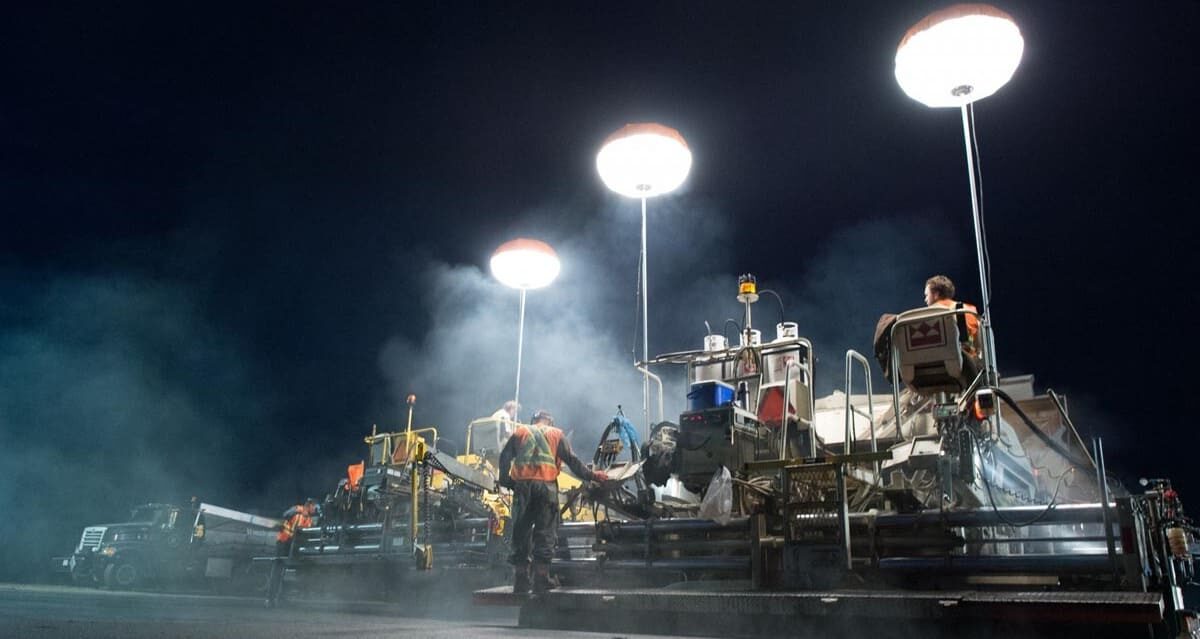Using outdated lighting in a modern bid is like bringing a candle to a floodlight fight.
Yes, balloon light towers are better than traditional towers for bid submissions because they are glare-free1, faster to deploy, energy-efficient2, and easier to transport3—key factors in competitive tenders.
[^2] Balloon vs Traditional Light Tower](http://moonlightia.com/wp-content/uploads/2023/04/lumoon-balloon-1.jpg)
In tender submissions, every point matters. Evaluators look at safety, setup time4, cost, mobility, and compliance. Traditional light towers may still work—but balloon towers often check more boxes. They solve common pain points in modern infrastructure, rescue, or road tenders, while also improving your bid’s total value score.
What’s the Difference in Lighting Quality Between the Two?
Poor lighting is still poor—no matter how bright it is.
Balloon towers offer glare-free1, 360° light, while traditional towers create focused, harsh beams that can cause shadows and eye strain—making balloon towers better for safety and spec compliance.

Most tenders include lighting quality specs. Balloon towers shine in this category. Their design uses a diffused shell that softens LED light and spreads it evenly across a worksite. Traditional towers often use metal halide or halogen lamps, which cast intense, narrow beams. These create hot spots and leave parts of the site in shadow. That leads to lower visibility and higher safety risks—something that can hurt your technical score in a bid.
Lighting Quality Comparison Table
| Feature | Traditional Tower | Balloon Light Tower |
|---|---|---|
| Light Direction | Forward/Narrow Beam | 360° All-Around Lighting |
| Glare Level | High (blinding) | Very Low (diffused output) |
| Shadow Zones | Common | Rare |
| Eye Strain Risk | High | Low |
| Tender Safety Compliance | Variable | Strong |
If the tender mentions glare-free1 or soft lighting—balloon towers are the clear winner.
How Do Setup and Transport Impact Bid Scoring?
Every minute wasted on-site is a point lost on paper.
Balloon towers are faster to deploy and easier to move, which helps you meet tender requirements for efficiency, safety, and flexibility.

Traditional towers usually require trailers, tools, and multiple workers to set up. That’s not just inconvenient—it adds cost. Balloon towers inflate in under five minutes and require no lifting or complex wiring. Most models can be set up by one person. Their compact size also means you can transport several units in a small van, without the need for heavy logistics. This speed and mobility help in both emergency response and infrastructure bids where time and adaptability are key.
Deployment and Transport Comparison
| Factor | Traditional Tower | Balloon Tower |
|---|---|---|
| Setup Time | 20–30 minutes | 3–5 minutes |
| Tools Required | Yes | No |
| Manpower Needed | 2–3 workers | 1 person |
| Transport Needs | Truck or trailer | Car or van |
| Bid Compliance (Mobility) | Medium | High |
Faster deployment also means less risk of site delays—something public buyers value highly.
What About Energy Efficiency and Maintenance?
Winning bids save money long after the contract is signed.
Balloon towers are more energy-efficient2 and require less maintenance than traditional towers, offering lower total cost of ownership5 in long-term tenders.

Traditional towers use more power and often rely on fuel-powered generators. That adds to energy bills and emissions. Balloon towers use LED technology6, which consumes much less electricity. They’re also sealed and weatherproof, so they last longer with less maintenance. No bulb changes, no exposed parts, and fewer breakdowns. These savings aren’t just good in practice—they help improve your bid’s financial section by reducing the total project cost.
Cost Efficiency Comparison
| Cost Area | Traditional Tower | Balloon Tower |
|---|---|---|
| Energy Consumption | High (halide/halogen) | Low (LED) |
| Fuel Dependency | Frequent | Rare or none |
| Maintenance Frequency | Monthly or more | Minimal |
| Lifespan (Hours) | ~5,000–10,000 | 50,000+ |
| Spare Parts Cost | Moderate to High | Low |
When you add these cost savings into your tender pricing sheet, balloon towers give you a competitive edge.
Are Balloon Towers More Tender-Friendly Overall?
Bids aren’t just technical—they’re strategic.
Balloon towers are more tender-friendly because they meet more specifications with less complexity, making your proposal easier to approve and harder to reject.

Tenders often require detailed technical documentation7, proof of compliance, and clear answers to spec questions. Balloon towers usually come pre-certified (CE, UL, ETL), with IP65 protection8, test reports, and energy efficiency ratings. Suppliers like Moonlightia also offer OEM options9, customization10, and no-MOQ support—so you can tailor your solution to the tender without extra effort. This streamlines your submission and reduces the risk of being disqualified over minor issues.
Tender Friendliness Overview
| Evaluation Area | Traditional Tower | Balloon Light Tower |
|---|---|---|
| Documentation Readiness | Variable | Strong |
| Customization Flexibility | Limited | High |
| Spec Alignment | May need adjustments | Direct match |
| Cert Availability | Sometimes missing | Fully available |
| OEM/ODM Options | Rare | Offered |
Balloon towers don’t just meet the spec—they make your whole bid smoother and more professional.
Conclusion
Balloon light towers are better than traditional towers for bid submissions because they improve safety, reduce setup time4, save energy, and meet tender specs more completely and efficiently.
-
Discover the advantages of glare-free lighting for safety and comfort in various applications. ↩ ↩ ↩
-
Understand the principles of energy-efficient lighting and how it can save costs and reduce environmental impact. ↩ ↩
-
Find out how transportability affects project efficiency and logistics in lighting solutions. ↩
-
Learn how reducing setup time can enhance overall project efficiency and success. ↩ ↩
-
Understand the components that affect the total cost of ownership for lighting equipment. ↩
-
Discover the advantages of LED technology, including energy savings and longevity. ↩
-
Understand how technical documentation can influence the success of bid submissions. ↩
-
Discover the significance of IP65 protection in ensuring the durability and reliability of lighting solutions. ↩
-
Explore how OEM options can provide tailored solutions for specific project needs. ↩
-
Learn about the role of customization in meeting specific tender requirements effectively. ↩




